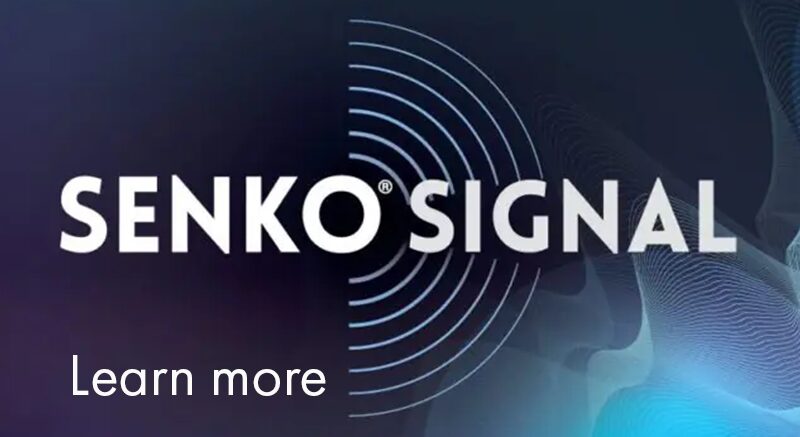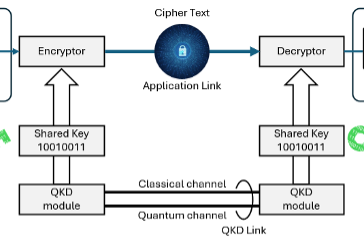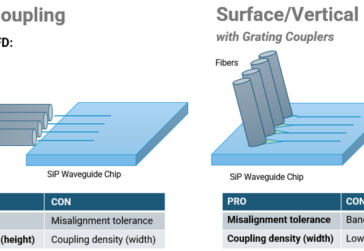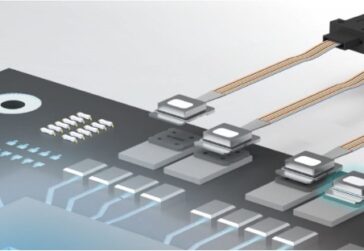Challenges in Optical Connector Inspection and Cleaning
With increasing demands for high-speed data and low-latency connections, optical networks have become the backbone of modern telecommunications and data center infrastructure. However, maintaining the quality and reliability of these networks hinges on the cleanliness and integrity of optical connectors. Contaminated or damaged connectors can lead to signal degradation, increased insertion loss, and even equipment failure.
Effective inspection and cleaning of optical connectors, particularly in high-density setups, recessed connectors, and lens transceivers, present a unique set of challenges. This article explores these challenges in detail and provides insights into strategies for overcoming them.
As space in telecommunication exchanges and data centers are limits, more ports and fibers per port are squeezed into the same footprint to increase the density of patch panels and switches. The crowded switch front plate and patch panels makes access to individual connectors for inspection and cleaning becomes increasingly difficult. This restriction hampers the ability to use conventional inspection and cleaning tools, as technicians may struggle to achieve the necessary angle and alignment to clean each connector thoroughly. Specialized extraction tools and FIP tips with extended reach are required to access the adapters to inspect the Behind-The-Wall (BTW) connectors without disturbing nearby connectors and cables.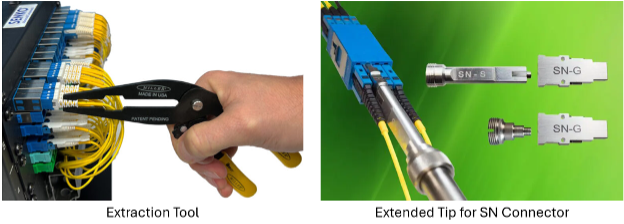
MPO connector uses MT ferrule, which is made using a polymer material and has a large surface area. This material attracts dust and makes cleaning much more difficult compared to ceramic ferrules of SN connectors which have a comparable fiber density. In addition, the alignment pin on the male MPO connector and the alignment hole of the female MPO connector can also become contaminated. Cleaning these requires a different set of cleaning material such as gel pads and brushes.

With the increasing number of FTTH deployments globally, equipment manufacturers have improved the aesthetics of in-home Optical Network Terminals (ONT). One of the common design changes is the use of a recessed fiber adapter. Standard FIP tips and click cleaners cannot access the connector end face in the recessed adapter. Angled FIP tips and angled click cleaners are developed to address these challenges.

There are many different types of transceivers deployed globally. Many incorporate standard connector stubs within the barrel that can be inspected and cleaned like any other fiber connectors. However, there are transceivers like the ROSA that feature an internal lens. When inspected with an FIP, the internal view of the SFP appears distorted due to the lens in its design. To prevent damage to the SFP and its lens, standard cleaning methods cannot be employed.
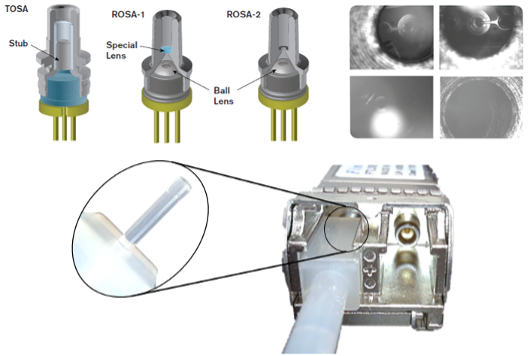
Conclusion
Ensuring clean, well-maintained optical connectors is essential for network reliability and performance, but various challenges make this task complex. High-density configurations, recessed connectors, and lens-based transceivers, each require unique solutions to maintain cleanliness and integrity.
By investing in the right tools, training, and practices, network operators can mitigate these challenges, reduce downtime, and ensure a high-performance network. As optical networks continue to evolve, addressing these inspection and cleaning challenges will remain essential to delivering high-speed, reliable connections for businesses and consumers alike.
